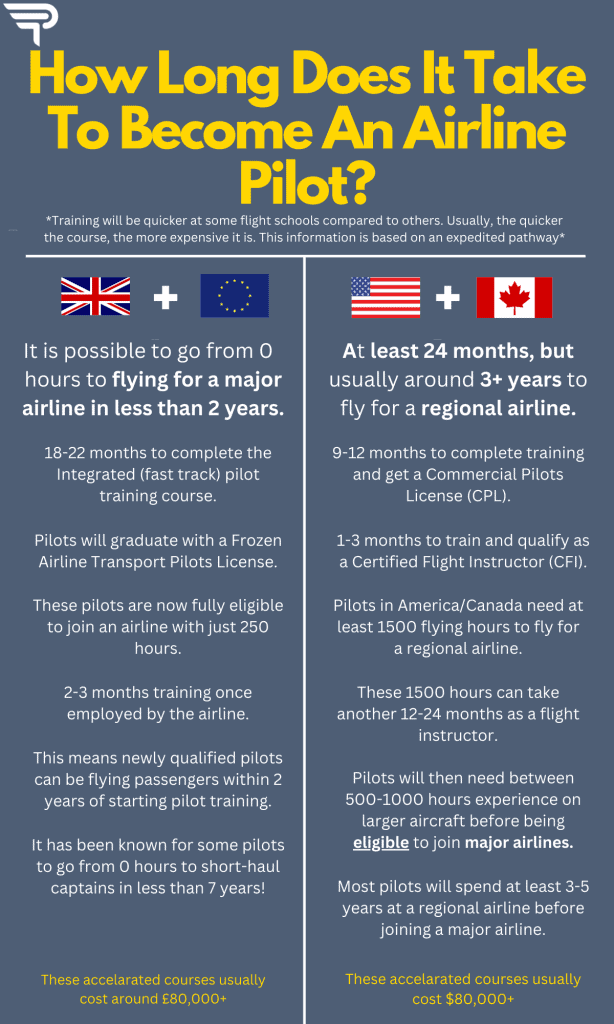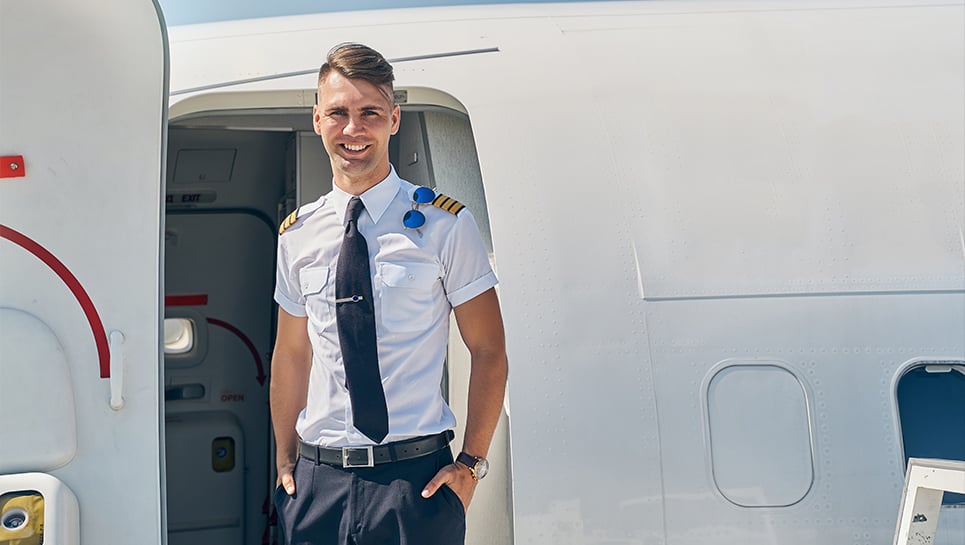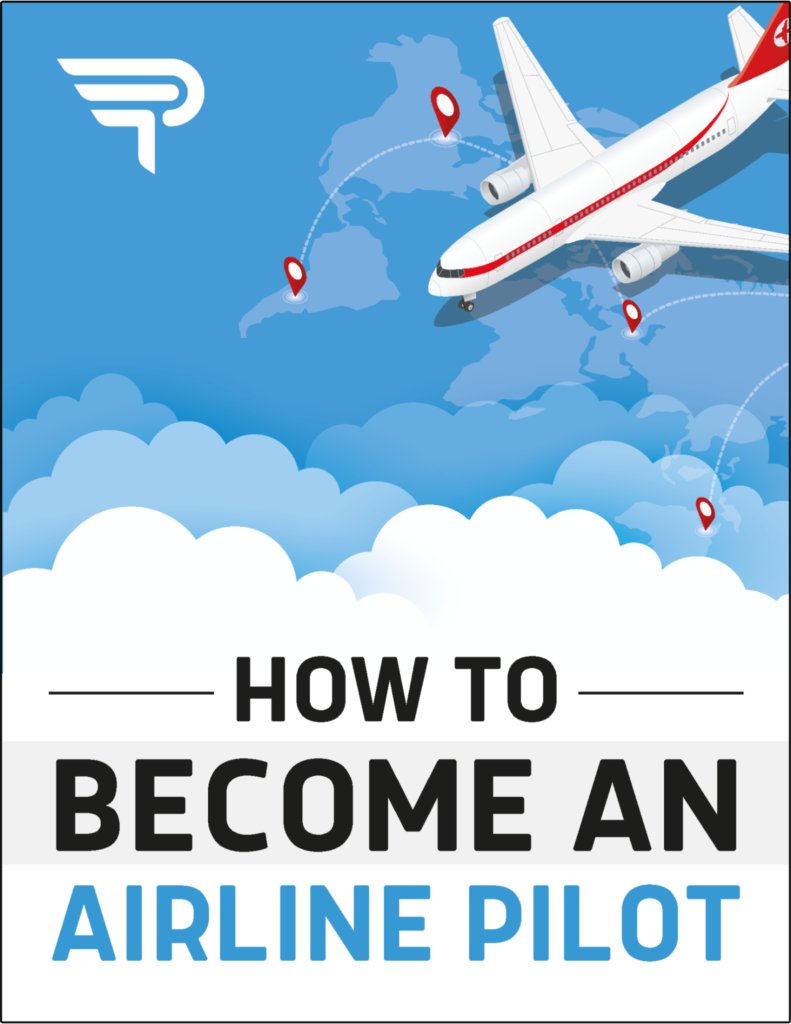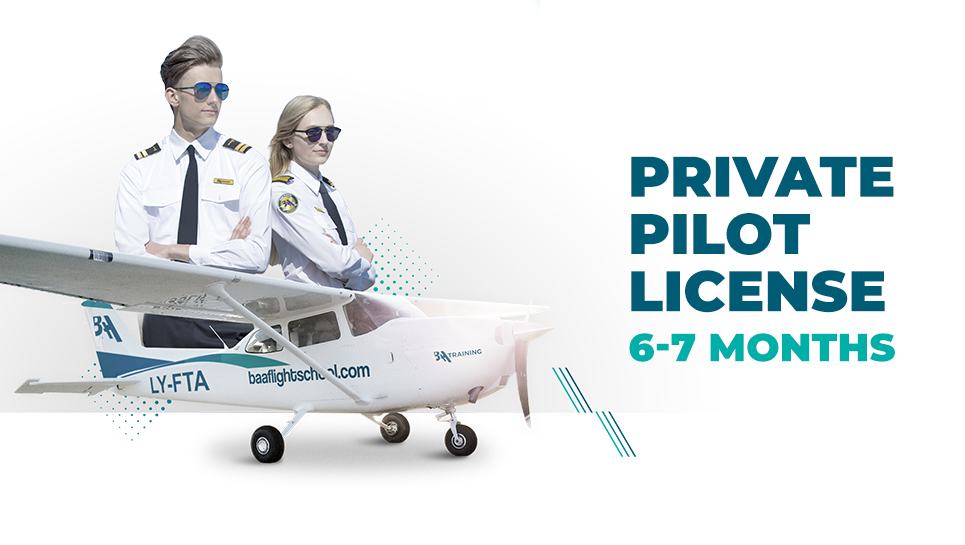So you’ve always dreamed of soaring through the sky amongst the clouds, taking control of a mighty aircraft as a pilot. But just how quickly can you turn this dream into a reality? The answer may surprise you. In this article, we will explore the journey of becoming a pilot, the different pathways available to aspiring aviators, and the time it takes to earn those coveted wings. Whether you’re a complete novice or have some prior aviation experience, the exciting world of piloting awaits, and the timeframe to join the ranks may be shorter than you think. Buckle up and let’s embark on this exhilarating journey together.
Choosing the Right Flight Training Program
When it comes to pursuing your dream of becoming a pilot, choosing the right flight training program is crucial. There are numerous flight training programs available, each offering a unique set of features and benefits. Conducting thorough research is essential to ensure you make an informed decision. Here are a few factors to consider when researching different flight training programs.
Researching Different Flight Training Programs
Start by researching different flight training programs in your area or in the location where you wish to pursue your training. Look for programs that are well-established and have a good reputation in the aviation industry. Consider factors such as the program’s curriculum, the qualifications and experience of the instructors, and the availability of training aircraft.
Additionally, read reviews and testimonials from past students to gain insight into their experiences with the program. This will help you understand the program’s strengths and weaknesses and give you a better idea of what to expect. It’s always a good idea to reach out to current and former students to ask specific questions and get their honest opinions.
Considering the Duration of the Program
The duration of a flight training program can vary depending on several factors, including the type of license or rating you are pursuing, the training schedule, and your individual progress. Private Pilot License (PPL) programs typically take around 3-6 months to complete, while more advanced licenses, such as a Commercial Pilot License (CPL), can take anywhere from 9 months to a year or more.
When considering the duration of a program, it’s important to take into account your availability and commitment level. If you have a full-time job or other responsibilities, you may need to opt for a part-time training program that allows you to balance your training with your other commitments. On the other hand, if you can dedicate yourself full-time to your training, a more intensive program might be suitable.
Assessing the Quality of the Program
The quality of a flight training program can significantly affect your learning experience and future as a pilot. Look for programs that have a well-structured curriculum and experienced instructors who are knowledgeable about the latest aviation practices and regulations.
Additionally, check if the flight school is accredited by reputable aviation organizations, such as the Federal Aviation Administration (FAA) in the United States or similar authorities in other countries. Accreditation ensures that the program meets certain standards of quality and professionalism.
Consider visiting the flight school in person to get a sense of the facilities and the overall atmosphere. Talk to the instructors and ask about their teaching methods and approaches. This will give you a better understanding of the program’s commitment to providing a high-quality education.
Requirements for Becoming a Pilot
Before embarking on your flight training journey, it’s important to understand the requirements for becoming a pilot. These requirements can vary based on the country you are in, but we will provide a general overview of the common requirements.
Age and Educational Requirements
The minimum age requirement for starting flight training varies from country to country, but it is typically around 16 or 17 years old to begin training for a private pilot license. However, the age requirement may be higher for more advanced licenses, such as a commercial pilot license.
In terms of educational requirements, most flight training programs require a high school diploma or equivalent. Some programs may also require a certain level of academic achievement, such as a minimum GPA.

This image is property of 883b86fe.flyingcdn.com.
Medical Certificate
To become a pilot, you must obtain a medical certificate from an aviation medical examiner. The medical certificate ensures that you meet the physical and mental requirements to safely operate an aircraft. The specific medical standards can vary depending on the type of pilot license you are pursuing.
Prior to undergoing the medical examination, it’s important to review the requirements and ensure that you meet them. If you have any existing medical conditions or concerns, it’s advisable to consult with an aviation medical examiner before starting your flight training.
English Language Proficiency
English language proficiency is vital for pilots, as English is the international language of aviation. Most flight training programs require a minimum level of English language proficiency to ensure effective communication with air traffic control and other aviation professionals.
You may be required to demonstrate your English language proficiency through a standardized test, such as the International Civil Aviation Organization (ICAO) Aviation English Exam. This test assesses your ability to understand and communicate in English within an aviation context.
Background Checks
As part of the pilot certification process, background checks are typically conducted to ensure the safety and security of aviation operations. These checks may include criminal history checks, fingerprinting, and verification of legal status.
It’s important to be aware of any potential issues that may arise during the background check process. If you have a criminal record or any legal complications, it is advisable to consult with an aviation attorney or your flight training program to understand how these issues may affect your ability to obtain a pilot’s license.
Private Pilot License (PPL)
The Private Pilot License (PPL) is the first step for aspiring pilots. It allows you to fly for recreational purposes and is the foundation for further flight training. Here’s an overview of what you can expect during your journey to obtaining a PPL.
Training and Ground School
PPL training consists of both flight training and ground school. Flight training involves hands-on experience flying an aircraft, while ground school focuses on the theoretical knowledge necessary to fly safely and confidently.
In flight training, you’ll learn basic maneuvers, navigation techniques, and emergency procedures. Ground school covers topics such as aerodynamics, aviation regulations, meteorology, and navigation. The combination of practical flight training and theoretical knowledge ensures a well-rounded education.

This image is property of baatraining.com.
Minimum Flight Hours
The FAA requires a minimum of 40 flight hours for a PPL, but the actual number of hours required may vary based on the flight school and the student’s progress. It’s important to note that the minimum requirements are just that – minimums. Most students require additional flight hours to reach the necessary skill level and confidence to pass the checkride.
The flight hours include a combination of solo flight time and flight hours with an instructor. The solo flight time allows you to demonstrate your competence and proficiency in various maneuvers and flight operations.
Preparation for Written Exam
Alongside flight training, you’ll need to prepare for and pass the written exam. The written exam assesses your knowledge of aviation regulations, navigation techniques, meteorology, and other relevant topics.
Flight training programs often include ground school classes and study materials to help you prepare for the written exam. It’s important to take this aspect seriously and dedicate sufficient time and effort to studying the required material.
Checkride and Practical Exam
Once you’ve completed your flight training and passed the written exam, the final step towards obtaining your PPL is the checkride or practical exam. The checkride is conducted by an FAA-designated examiner and evaluates your ability to safely operate an aircraft and make informed decisions in various flight scenarios.
During the checkride, you’ll demonstrate your flying skills, knowledge, and decision-making abilities. It consists of both a flight portion, where you perform various maneuvers and flight operations, and an oral portion, where you’ll be asked questions about aviation theory and regulations.
Achieving your PPL is a significant milestone in your pilot journey. It opens up opportunities for recreational flying and serves as a foundation for further training and licenses.
Instrument Rating (IFR)
The Instrument Rating (IFR) is an additional qualification that allows pilots to fly in instrument meteorological conditions (IMC), where visibility may be restricted. Obtaining an IFR rating enhances a pilot’s skills and opens up more opportunities for flying. Here’s what you need to know about pursuing an IFR rating.
Training and Ground School
IFR training focuses on teaching pilots to fly safely and confidently solely by reference to the aircraft’s instruments. The training includes both flight training and ground school, similar to the PPL training process.
During IFR flight training, you’ll learn advanced navigation techniques, instrument flying procedures, and approaches to different types of airspace and weather conditions. Ground school covers topics such as instrument flight rules, aviation weather, air traffic control procedures, and IFR flight planning.

This image is property of 883b86fe.flyingcdn.com.
Minimum Flight Hours
The FAA requires a minimum of 50 flight hours of cross-country flight time for the IFR rating, including a specified number of hours of instrument flight. However, similar to the PPL, most students require additional flight hours to reach the necessary level of proficiency and confidence.
The flight hours for the IFR rating build upon the skills acquired during the PPL training. They focus on refining instrument flying techniques, navigation, and decision-making in challenging weather conditions.
Written Exam and Oral Test
As with the PPL, there is a written exam that assesses your knowledge of instrument flying procedures, regulations, and other relevant topics. The exam is similar in format and content to the PPL written exam, but with a more specialized focus on instrument flight operations.
Prior to the practical exam, you’ll also undergo an oral test, where the examiner will ask you questions to assess your understanding of instrument flight principles, procedures, and regulations.
Checkride and Practical Exam
The final step towards obtaining an IFR rating is the checkride, which is similar in format to the PPL checkride. The checkride evaluates your instrument flying skills, decision-making abilities, and knowledge of IFR procedures.
During the checkride, you’ll perform various instrument flight maneuvers and approaches under the guidance of an FAA-designated examiner. The examiner will assess your ability to maintain precise control of the aircraft, navigate accurately using instruments, and safely manage simulated emergency situations.
Achieving an IFR rating enhances your piloting skills and allows you to fly in a wider range of weather conditions. It is particularly valuable for those considering a career as a professional pilot or those who frequently fly in regions with unpredictable weather patterns.
Commercial Pilot License (CPL)
The Commercial Pilot License (CPL) is the next step for those looking to pursue a career as a pilot. This license enables you to fly for compensation or hire, opening doors to various opportunities in the aviation industry. Here’s a breakdown of what it takes to obtain a CPL.
Training and Ground School
CPL training builds upon the skills and knowledge acquired during the PPL training. The training includes both flight training and ground school, which cover more advanced topics and techniques relevant to commercial operations.
Flight training focuses on refining your flying skills, particularly in areas such as advanced maneuvers, navigation, and emergency procedures. Ground school covers topics such as aerodynamics, aviation regulations, advanced navigation techniques, and airline operations.

This image is property of d4y70tum9c2ak.cloudfront.net.
Minimum Flight Hours
The FAA requires a minimum of 250 flight hours for a CPL. These hours include both the flight time acquired during the PPL training and additional flight time during the CPL training.
The CPL flight hours focus on developing the skills needed for commercial operations, such as flying with passengers, operating complex aircraft, and performing precise maneuvers and landings. They also include cross-country flights to various airports to enhance your navigation and planning abilities.
Preparation for Written Exam
Similar to previous certifications, there is a written exam that covers a wide range of topics, including aviation regulations, aerodynamics, flight planning, and crew resource management. The exam is more comprehensive and challenging compared to previous exams, reflecting the higher level of knowledge required for commercial operations.
Flight training programs often offer tailored ground school classes and study materials to help you prepare for the written exam. Take advantage of these resources and allocate sufficient time and effort to study the required material.
Checkride and Practical Exam
The CPL checkride evaluates your knowledge, skills, and decision-making abilities in the context of commercial flight operations. The checkride consists of both a flight portion and an oral portion, as with the previous checkrides.
During the flight portion, you’ll demonstrate your ability to conduct commercial flight operations, including precise maneuvers, navigation, and emergency procedures. The oral portion assesses your understanding of commercial operations, aviation regulations, and safety procedures.
Achieving a CPL opens up various career opportunities in the aviation industry. Whether you aspire to fly for a major airline, work in aerial photography, or provide flight instruction, a CPL is a necessary step in pursuing a professional pilot career.
Multi-Engine Rating
The Multi-Engine Rating is an additional qualification that allows pilots to fly aircraft with more than one engine. This rating enhances a pilot’s skills and expands their capabilities to operate larger and more complex aircraft. Here’s what you need to know about obtaining a Multi-Engine Rating.
Training and Ground School
Multi-Engine Rating training comprises flight training and ground school focused on the operation and control of multi-engine aircraft. The training covers topics such as engine systems, aircraft performance, emergency procedures, and advanced multi-engine flying techniques.
During flight training, you’ll learn how to properly manage and control the engines, handle engine failures, and perform single-engine operations. Ground school provides theoretical knowledge to support your practical training, ensuring you have a comprehensive understanding of multi-engine aircraft.

This image is property of baatraining.com.
Minimum Flight Hours
The FAA requires a minimum of 15 flight hours of multi-engine flight time for the Multi-Engine Rating. These flight hours are typically divided between dual instruction with an instructor and solo flights. Additional hours may be required to reach the required level of proficiency and confidence.
The flight hours focus on developing the skills needed to safely and effectively operate multi-engine aircraft. You’ll learn how to handle the increased power, manage asymmetric thrust, and operate the complex systems associated with multi-engine aircraft.
Written Exam and Oral Test
Before the practical exam, you’ll need to pass a written exam that covers topics such as multi-engine aerodynamics, systems, performance, and emergency procedures. The exam is similar to previous written exams but with a specific focus on multi-engine operations.
Additionally, an oral test, conducted by the examiner, assesses your understanding of multi-engine aircraft, their systems, performance limitations, and emergency procedures. The purpose of the oral test is to ensure you have a solid theoretical knowledge base before proceeding to the flight portion of the exam.
Checkride and Practical Exam
The Multi-Engine Rating checkride evaluates your ability to safely operate multi-engine aircraft and manage different flight scenarios, including engine failures. The checkride consists of both a flight portion and an oral portion, as with previous checkrides.
During the flight portion, you’ll demonstrate your ability to safely handle normal and emergency operations in multi-engine aircraft. The examiner will evaluate your decision-making abilities, engine management skills, and overall proficiency in operating multi-engine aircraft.
Obtaining a Multi-Engine Rating expands your flying opportunities and prepares you to handle more complex aircraft. This qualification is particularly valuable for those considering a career as a commercial pilot or flying advanced aircraft that require multi-engine capabilities.
Time and Financial Commitment
Becoming a pilot requires a significant time and financial commitment. It’s important to understand the factors that can affect the duration of your training and the associated costs. Here are some considerations to keep in mind.
Factors Affecting Training Duration
Several factors can affect the duration of your flight training. These include your availability and commitment level, the training program’s structure, and external factors such as weather conditions. Full-time students who can dedicate themselves solely to their training may be able to complete the required flight hours more quickly compared to part-time students who have other commitments.
Furthermore, the training program you choose can also impact the duration. Some programs offer accelerated training options that condense the training into a shorter period, while others follow a more traditional schedule. The effectiveness of your study habits and the support provided by the flight school can also influence the time it takes to complete your training.
Full-time vs Part-time Training
Deciding between full-time and part-time training depends on your individual circumstances and commitments. Full-time training allows you to immerse yourself fully in the training process, which can lead to quicker progress. This option is suitable for those who have the financial means and flexibility to dedicate themselves fully to their training.
On the other hand, part-time training allows you to balance your flight training with other commitments, such as work or education. While this option may take longer to complete, it provides the flexibility to manage your time and finances more effectively.
Cost of Flight Training Programs
The cost of flight training programs can vary significantly depending on several factors, including the flight school, location, and type of licenses or ratings you are pursuing. It’s important to research and compare the costs of different programs to find one that fits within your budget.
In addition to the tuition fees, you should also consider other expenses such as study materials, aircraft rental, fuel costs, and examination fees. These expenses can add up, so it’s crucial to have a clear understanding of the total cost involved in your flight training.
Many flight schools offer financing options or scholarships to assist students with their financial needs. It’s worth exploring these options and discussing them with the flight schools you are considering to help make your training more affordable.
Building Flight Experience and Flight Hours
Once you have obtained your pilot’s license, building flight experience and flight hours is essential to furthering your career as a pilot. Here are some common avenues that pilots pursue to gain flight experience and build their hours.
Working as a Flight Instructor
One of the most common ways for pilots to gain experience and build flight hours is by working as a flight instructor. Flight instructing allows you to share your knowledge and passion for aviation with aspiring pilots while accumulating valuable flight hours. It also provides an opportunity to refine your piloting skills and deepen your understanding of aviation concepts.
Working as a flight instructor offers a structured and regulated environment where you can continue learning and growing as a pilot. It also provides a pathway to more advanced roles within the aviation industry.
Charter and Air Taxi Operations
Charter and air taxi operations provide another avenue for pilots to build flight experience and hours. These operations involve flying aircraft to transport passengers on a non-scheduled basis. This type of flying often involves shorter flights and more frequent takeoffs and landings, allowing pilots to refine their skills in these critical areas.
Charter and air taxi operations offer opportunities to fly different types of aircraft and gain exposure to various flying environments. As pilots gain experience and accumulate more flight hours, they can progress to larger and more complex aircraft, expanding their capabilities and career prospects.
Airline Pilot Career Path
For those aspiring to become airline pilots, building flight experience and hours is crucial to qualify for the competitive hiring requirements of major airlines. Many pilots start their careers at regional airlines, which offer valuable flying experience and the opportunity to build flight hours.
Regional airline pilots typically fly smaller regional aircraft, transporting passengers to smaller airports. As pilots gain experience and accumulate flight hours, they can progress to larger airlines and become eligible for positions on larger aircraft.
The path to becoming an airline pilot requires a significant commitment of time, effort, and dedication. Building flight experience and hours is an essential step to progress in this career path and achieve your goal of flying for a major airline.
Other Considerations
When pursuing flight training, there are several additional considerations that can impact your experience and success as a pilot. Here are some factors to keep in mind.
Weather and Seasonal Challenges
Weather conditions can significantly impact your flight training. Inclement weather, such as strong winds, poor visibility, and adverse meteorological conditions, can limit your training opportunities. It’s important to be prepared for potential schedule disruptions due to weather and to have backup plans in place.
Seasonal challenges, such as extreme temperatures or increased precipitation, may also affect your training. For example, flight schools in areas with harsh winters may have limited training availability due to snow or ice on runways. Being aware of these challenges and planning accordingly can help you navigate any potential obstacles.
Personal Learning Abilities
Flight training requires a certain level of discipline, focus, and self-motivation. Everyone learns at their own pace, and it’s important to understand your personal learning style and abilities. Some individuals may require additional time or practice to master certain concepts or maneuvers. Patience and persistence are key as you progress through your training.
Additionally, being open to feedback and actively seeking opportunities for improvement will enhance your learning experience. Effective communication with your flight instructors and a willingness to ask questions and seek clarification when needed will contribute to your success as a pilot.
Availability of Flight Instructors and Aircraft
The availability of flight instructors and aircraft is another consideration when choosing a flight training program. Flight instructors play a crucial role in your training, guiding and mentoring you throughout the process. It’s important to have access to experienced and qualified instructors who can provide personalized attention and support.
Additionally, the availability of training aircraft is essential to ensure that you have sufficient opportunities to practice and build flight hours. Flight schools with a diverse fleet of well-maintained aircraft offer more flexibility, particularly when it comes to scheduling and rescheduling training flights.
When researching flight training programs, inquire about the availability of instructors and aircraft to ensure that you will have the necessary resources to complete your training in a timely manner.
Conclusion
Choosing the right flight training program and meeting the requirements to become a pilot are significant steps towards achieving your dream of taking to the skies. It’s crucial to research and compare different programs, considering factors such as the program’s duration, the quality of instruction, and the financial commitment involved. Understanding the requirements for becoming a pilot, including age and educational requirements, medical certification, English language proficiency, and background checks, will set you on the right path.
Obtaining the necessary licenses and ratings, such as the Private Pilot License (PPL), Instrument Rating (IFR), Commercial Pilot License (CPL), and Multi-Engine Rating, will enhance your skills and open doors to various opportunities in the aviation industry. Building flight experience and hours through flight instruction, charter and air taxi operations, and the airline pilot career path will further your progress as a pilot.
Throughout your journey, it’s important to consider external factors such as weather challenges, personal learning abilities, and the availability of flight instructors and aircraft. By carefully considering these factors and committing to continuous learning and improvement, you can embark on a successful and fulfilling career as a pilot.
